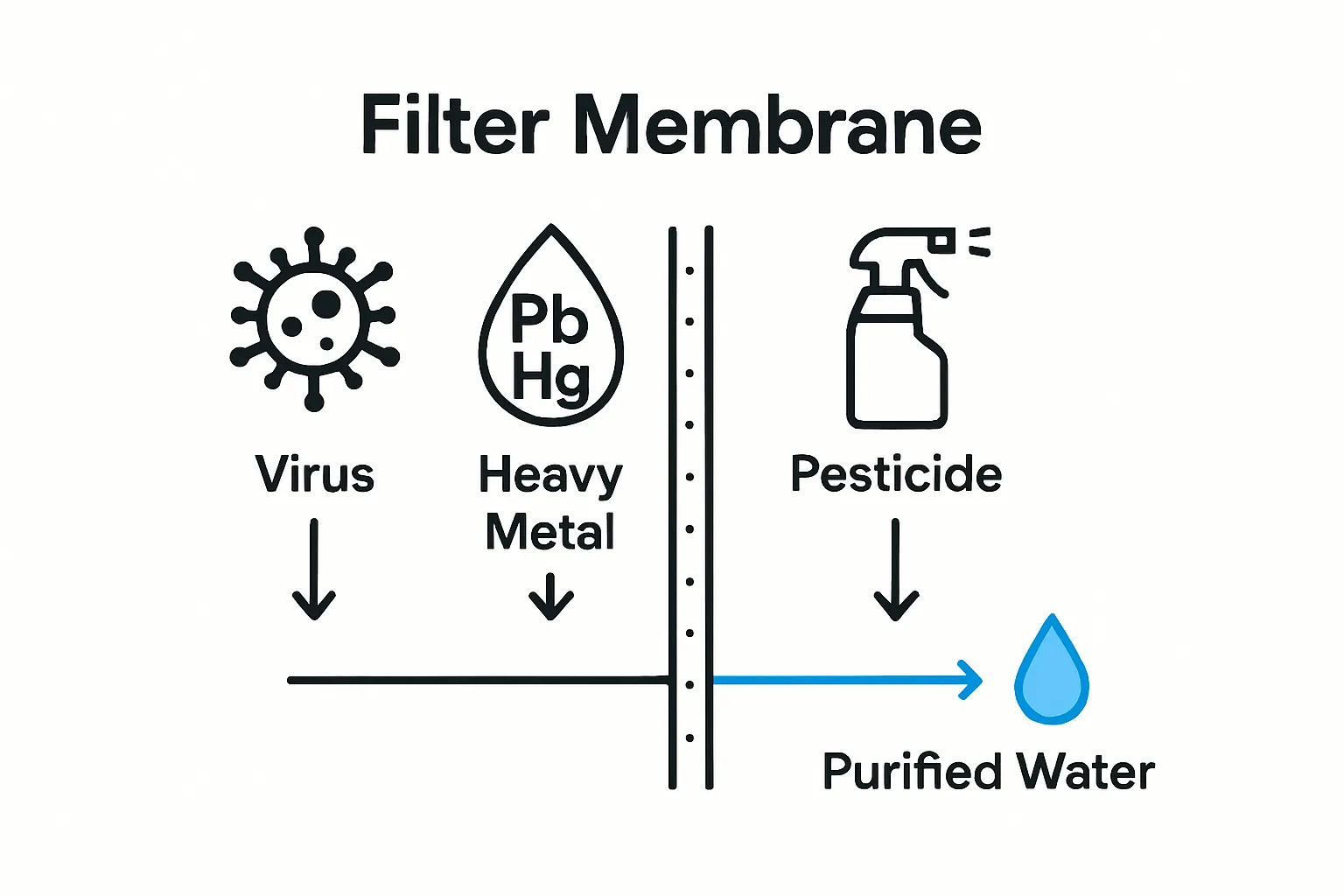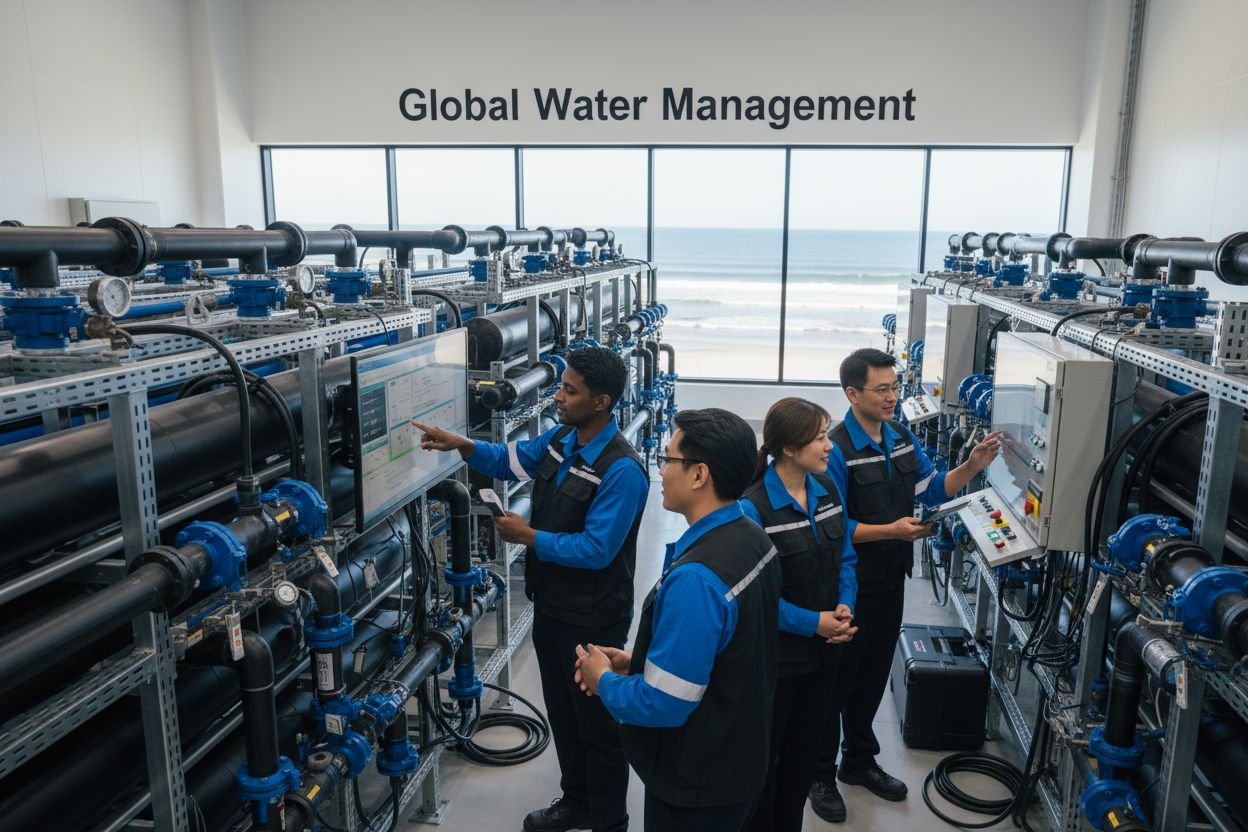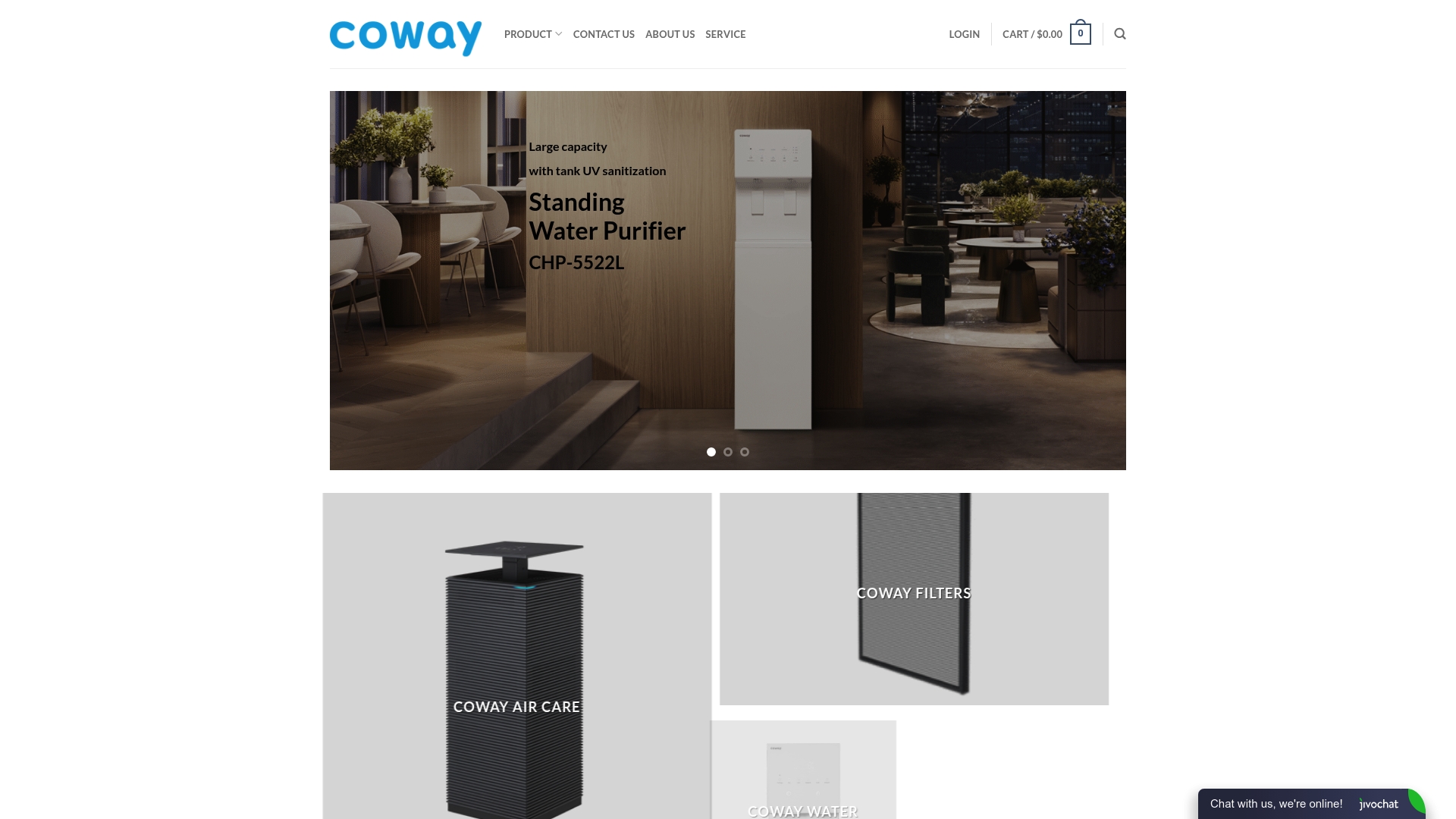Uncategorized
Understanding What is Reverse Osmosis for Clean Water
Reverse osmosis sounds like something out of a science textbook, but it is quietly changing lives around the world every day. You might expect regular water filters to do the job, yet reverse osmosis systems can remove up to 99 percent of dissolved solids and harmful contaminants from water. The surprise is that this technology is not just for fancy labs or industrial plants—families are now using it at home to make their tap water cleaner and safer than ever.
Table of Contents
- Defining Reverse Osmosis: Basic Concepts
- The Importance of Reverse Osmosis in Water Purification
- How Reverse Osmosis Works: The Science Behind It
- Key Components of Reverse Osmosis Systems
- Real-World Applications of Reverse Osmosis
Quick Summary
| Takeaway | Explanation |
|---|---|
| Reverse osmosis effectively removes contaminants. | This technology can filter out bacteria, heavy metals, and chemical pollutants, ensuring clean drinking water. |
| It functions through a specialized semipermeable membrane. | The membrane allows only water molecules to pass while blocking larger impurity particles, ensuring high purity. |
| Industrial sectors rely on reverse osmosis for water quality. | Industries like pharmaceuticals and electronics require ultrapure water, showcasing the process’s essential applications. |
| Desalination plants use reverse osmosis for clean water. | This technology converts seawater into drinking water, helping to address water scarcity in coastal areas. |
| Reverse osmosis contributes to environmental sustainability. | By reducing bottled water use, it minimizes plastic waste and promotes responsible water consumption. |
Defining Reverse Osmosis: Basic Concepts
Reverse osmosis represents an advanced water purification technology that transforms contaminated water into clean, safe drinking water through a sophisticated filtration process. At its core, this method provides a powerful solution for removing impurities, dissolved solids, and potentially harmful contaminants from water sources.
The Science Behind Reverse Osmosis
Understanding what is reverse osmosis begins with exploring its fundamental scientific mechanism. Traditional osmosis involves water naturally moving through a semipermeable membrane from an area of lower concentration to higher concentration. Reverse osmosis inverts this natural process by applying external pressure to push water molecules through a specialized membrane, filtering out microscopic contaminants.
The semipermeable membrane acts like an ultra-fine molecular sieve, allowing water molecules to pass while blocking larger molecules such as:
- Dissolved salts
- Heavy metals
- Bacteria
- Viruses
- Chemical compounds
According to The Water Quality Association, this filtration method can remove up to 99% of dissolved solids, making it one of the most effective water purification techniques available.
Practical Applications and Significance
Reverse osmosis extends far beyond household water filtration. This technology plays a critical role in multiple industries and environmental contexts. Desalination plants use reverse osmosis to convert seawater into potable water, addressing water scarcity challenges in coastal regions. Medical facilities rely on ultrapure water produced through reverse osmosis for laboratory and surgical applications.
For residential users, reverse osmosis systems provide a reliable method to improve water quality, removing contaminants that traditional filtration methods might miss. By understanding the intricate science behind this process, consumers can make informed decisions about their water treatment needs and appreciate the remarkable technology that transforms potentially harmful water into a safe, refreshing resource.
The Importance of Reverse Osmosis in Water Purification
Reverse osmosis represents a critical technology in modern water treatment, addressing significant health and environmental challenges associated with water contamination. By providing an advanced filtration mechanism, this process ensures that drinking water meets stringent quality standards and protects public health.
Eliminating Harmful Contaminants
Water quality is fundamental to human health, and reverse osmosis plays a pivotal role in removing dangerous substances that traditional filtration methods might overlook. The Centers for Disease Control and Prevention highlights the importance of comprehensive water treatment in preventing potential health risks.
Reverse osmosis effectively eliminates a wide range of dangerous contaminants:

- Microorganisms like bacteria and viruses
- Heavy metals such as lead and mercury
- Chemical pollutants including pesticides and industrial chemicals
- Dissolved inorganic compounds
- Radioactive elements
Economic and Environmental Impact
Beyond individual health benefits, reverse osmosis offers substantial economic and environmental advantages. Water treatment technologies like reverse osmosis reduce the need for bottled water, decreasing plastic waste and providing a more sustainable water consumption model. Learn more about our advanced water filtration methods to understand the comprehensive approach to water purification.
Industrial sectors such as agriculture, pharmaceuticals, and electronics rely on ultrapure water produced through reverse osmosis. The technology enables water recycling, conservation, and supports critical processes that demand exceptional water quality. By transforming contaminated water sources into safe, usable resources, reverse osmosis contributes significantly to addressing global water scarcity challenges and promoting sustainable water management practices.
How Reverse Osmosis Works: The Science Behind It
Reverse osmosis represents a sophisticated water purification technique that fundamentally transforms water quality through precision molecular filtration. By leveraging advanced scientific principles, this technology provides an extraordinary method for producing ultra-pure water through intricate mechanical processes.
Membrane Filtration Mechanism
The semipermeable membrane is the core component of reverse osmosis technology. This specialized membrane features microscopic pores that allow water molecules to pass while blocking larger contaminant particles. According to National Sanitation Foundation, the membrane’s precision can filter out particles as small as 0.0001 microns, which is significantly more refined than traditional water filtration methods.
The membrane’s filtration process operates through several critical stages:
- Prefiltration to remove larger sediments
- High-pressure water application
- Selective molecular separation
- Contaminant rejection
- Purified water collection
Pressure and Molecular Separation
The reverse osmosis process requires external pressure to overcome natural osmotic pressure, pushing water molecules through the semipermeable membrane. Learn more about our advanced water filtration systems to understand the comprehensive water purification approach.
As water passes through the membrane, dissolved solids, ions, and molecular contaminants are systematically trapped and separated. This precise molecular screening ensures that only pure water molecules emerge on the other side, creating an exceptionally clean water output. The rejected contaminants are then flushed away through a separate drainage system, completing the intricate purification cycle.
Key Components of Reverse Osmosis Systems
Reverse osmosis systems are complex technological solutions designed with multiple interconnected components that work harmoniously to transform contaminated water into pure, drinkable liquid. Understanding these essential elements helps users appreciate the intricate engineering behind effective water purification.
Essential Filtration Elements
The semipermeable membrane remains the most critical component of any reverse osmosis system. According to Water Research Center, this sophisticated filter determines the overall effectiveness of water purification. The membrane works in conjunction with several complementary components to ensure comprehensive water treatment.
The primary components of a reverse osmosis system include:
- Sediment pre-filter
- Carbon pre-filter
- Reverse osmosis membrane
- Post-carbon filter
- Storage tank
- Dedicated faucet
System Configuration and Performance
Each component plays a specific role in the water purification process. Pressure pumps generate the necessary force to push water through the intricate filtration stages. Learn more about our comprehensive water purification technologies to understand the nuanced approach to water treatment.
Pre-filters protect the delicate reverse osmosis membrane by removing larger particles and chlorine that could potentially damage the system. The post-carbon filter enhances water taste and removes any residual odors, ensuring the final output meets the highest quality standards. The integrated storage tank allows for continuous water availability, while the dedicated faucet provides convenient access to purified water directly at the point of use.
This table breaks down the main components of a typical reverse osmosis system and the role each part plays in delivering purified water.
| Component | Function |
|---|---|
| Sediment Pre-Filter | Removes larger particles, protecting the membrane |
| Carbon Pre-Filter | Eliminates chlorine and organic chemicals |
| Reverse Osmosis Membrane | Filters out dissolved solids, heavy metals, and more |
| Post-Carbon Filter | Enhances taste and removes residual odors |
| Storage Tank | Holds purified water for convenient access |
| Dedicated Faucet | Dispenses clean, filtered water to the user |
Real-World Applications of Reverse Osmosis
Reverse osmosis technology extends far beyond household water purification, emerging as a critical solution across diverse industries and environmental challenges. Its remarkable ability to transform contaminated water sources into pure, usable resources makes it an invaluable technological innovation with wide-ranging implications.
Industrial and Environmental Solutions
Water scarcity and contamination present significant global challenges, and reverse osmosis offers transformative solutions across multiple sectors. According to United Nations Water Report, water treatment technologies are essential for sustainable development and environmental preservation.
Industrial sectors leveraging reverse osmosis include:
- Semiconductor manufacturing
- Pharmaceutical production
- Food and beverage processing
- Power generation facilities
- Aerospace engineering
- Agricultural irrigation systems
Global Water Management Strategies
Reverse osmosis plays a pivotal role in addressing critical water challenges worldwide. Desalination plants utilize this technology to convert seawater into drinking water, providing sustainable solutions for regions experiencing acute water shortages. Learn more about our advanced water filtration methods to understand comprehensive water treatment approaches.
Beyond industrial applications, reverse osmosis supports humanitarian efforts by enabling safe water access in disaster-stricken regions and developing countries. Medical facilities rely on ultrapure water produced through this technology for critical research, surgical procedures, and laboratory operations. By transforming contaminated water sources into safe, reliable resources, reverse osmosis continues to play an indispensable role in global water management and public health protection.

Upgrade to Pure Water with Coway’s Reverse Osmosis Solutions
Do you worry about harmful contaminants or dissolved solids in your drinking water, even after using standard filters? The article explains that conventional methods often fail to fully protect against substances like heavy metals, bacteria, and unwanted chemicals. Reverse osmosis stands out because it effectively removes these hidden dangers, giving you the peace of mind that every sip is truly clean and safe. If you are ready to experience water purification at a molecular level, Coway’s advanced water purifiers bring cutting-edge membrane filtration directly to your home.

Take the next step toward healthier living today. Visit https://cowayswaterpurifier.com to discover Coway’s collection of under-sink, countertop, and large-capacity reverse osmosis systems. See how our filtration technology works and explore the different types of filters we offer so you can choose the right protection for your family. Clean water is vital for your health and now is the perfect time to make it a reality in your own kitchen.
Frequently Asked Questions
What is reverse osmosis and how does it work?
Reverse osmosis is a water purification technology that removes impurities and contaminants from water by pushing it through a semipermeable membrane under pressure. This process filters out dissolved solids, heavy metals, bacteria, and other harmful substances, resulting in clean, safe drinking water.
What contaminants can reverse osmosis remove from water?
Reverse osmosis is effective in removing a wide range of contaminants including microorganisms like bacteria and viruses, heavy metals such as lead and mercury, chemical pollutants like pesticides, dissolved inorganic compounds, and even radioactive elements.
How does reverse osmosis compare to traditional water filtration methods?
Unlike traditional filtration methods that may not effectively remove all contaminants, reverse osmosis can eliminate up to 99% of dissolved solids and other dangerous substances. Its semipermeable membrane technology provides a more thorough purification process, making it a superior choice for producing clean drinking water.
Here is a comparison table summarizing how reverse osmosis and traditional water filtration methods differ in terms of contaminant removal and purification effectiveness.
| Method | Filtration Mechanism | Effectiveness at Removing Contaminants | Typical Contaminants Removed |
|---|---|---|---|
| Reverse Osmosis | Semipermeable membrane under pressure | Up to 99% of dissolved solids and harmful contaminants | Microorganisms, heavy metals, chemicals, dissolved solids, radioactive elements |
| Traditional Filtration | Physical or adsorptive filters | Varies; may miss dissolved solids and smaller contaminants | Sediments, some bacteria, some chemicals |
What are the benefits of using a reverse osmosis system in my home?
Using a reverse osmosis system in your home can significantly improve water quality by removing harmful contaminants that may affect health. Additionally, it reduces reliance on bottled water, leading to less plastic waste and promoting sustainable water consumption practices.
Recommended
- Understanding Water Purification Terms Explained Clearly – Coway Water Purifier
- What is Under-Sink Water Purifier? Understanding Its Importance – Coway Water Purifier
- 7 Top Water Filtration Methods You Need to Know – Coway Water Purifier
- 7 Essential Types of Water Filters for Every Home – Coway Water Purifier

